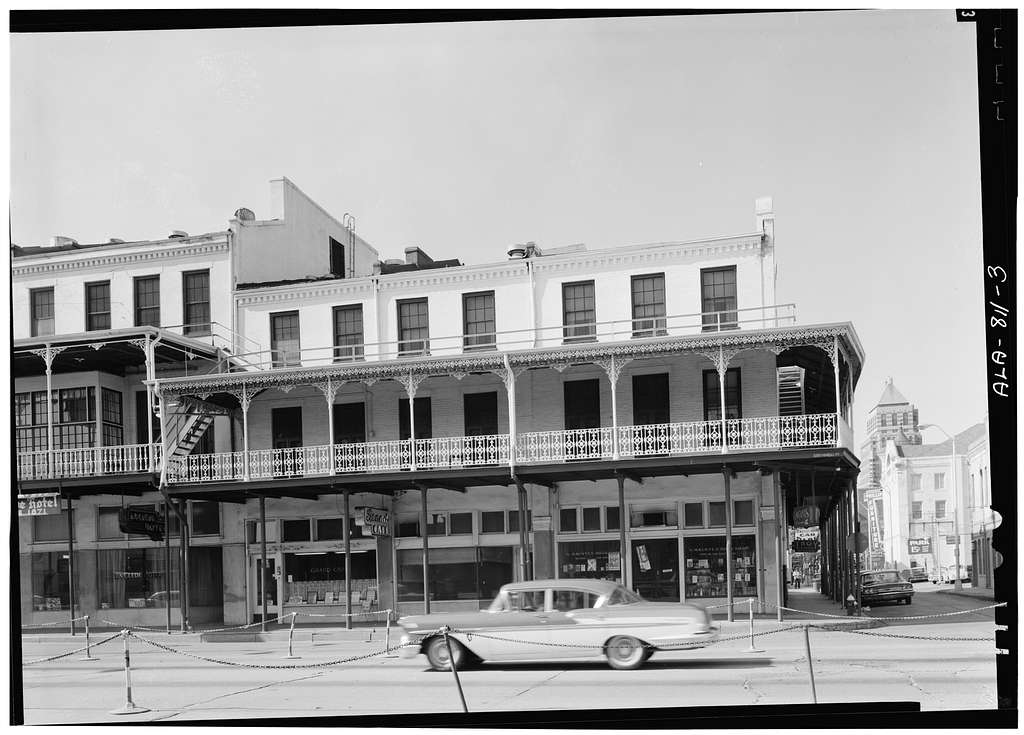
Castles in the Air
When I was growing up in the early 1950’s in the Gulf Coastal town of Mobile, Alabama, not only was it was segregated, but also a little shabby and run-down at the heels. There wasn’t a lot of money floating about due to the poverty that had been entrenched in the south for a long time. My childhood retained some of the flavor of the Depression and the sacrifices of WWII.
As children one of our favorite things to do was go to the large public library downtown to check out books. Afterwards we would proceed in a restrained manner out the back doors bursting into a run to play throughout the old Church Street Cemetery immediately behind the library. Enclosed by an ancient brick wall, the graves dated back to 1819.
*La Clede Hotel, Government St. Mobile, Al

The huge live oaks with the gray ghosts of Spanish moss hanging down provided coolness from the heat and it was the perfect place to play and imagine the past. Stories of the past and exploits of many of those buried in the cemetery were a part of our present lives. Perhaps that, along with the necessity to be able to reel off one’s ancestors like a proverbial recitation of Navajo clans in answer to the ever present question, “Now, who is your mothah?” gave me a natural inclination to want to know about the past.
I loved sitting with my maternal grandfather, Granddaddy Pickens, on the porch swing in the early evening and listening to him tell stories about his childhood in Louisiana and stories that he heard as a child about his family. It gave me a sense of who I was and where I belonged. Some Native Elders refer to this oral tradition as “weaving the rope.” Since I missed that experience with my paternal grandfather, “the Major,” it is no surprise that I have been inspired to search for those stories.
*Church St. Cemetery, Mobile, AL
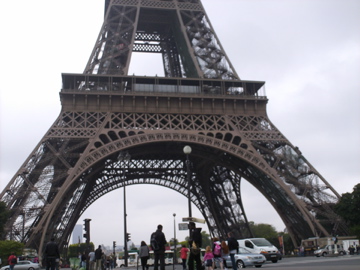
One of the more exotic tales about our grandparents, Nick and Elsa, involved them living in a chateau in France. Although I took this information in, I didn’t quite accept it as there is a family tendency that goes along with very creative people to build proverbial castles in the air. I’ve moved into one or two and landed on my derriere.
In May and June of this year, one of the things I especially wanted to do while in Europe was track down the elusive chateau shimmering in the mirage of family minds and see it for myself.
The European trip was due to a family gathering of some 100 people who came to celebrate the 40th anniversary of our Swedish cousins, Finn and his wife Eva. Finn Andreen, whose mother was our grandmother Elsa’s sister, is the keeper of family history and generously shares photos and wonderful stories.
He knew Nick as a young teenager after his father died and Nick came to Sweden to help settle Elsa and her sister Clary’s mother’s estate. Finn, who is erudite in the extreme, speaks at least 4-5 languages fluently and has been a wonderful source of information. He keeps me straight about the family history as he prefers his castles old and made of native stone.
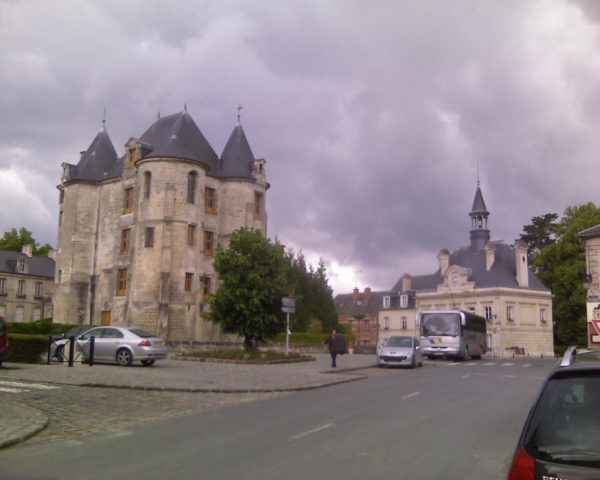
Finn knew that I wanted to go to the chateau and in the midst of hosting the large family group including elderly relatives, his own children and grandchildren, he graciously offered to drive me to the little village of Vic-sur-Aisnes. Vic-sur-Aisnes is about 3 hours or so northeast of Paris on the edge of Champagne country.
We set off on a rainy drizzly morning with Finn driving. Finn recounted family tales as French lorries whoosed past us. A tall thin man, he clutched the wheel of the small car between his knees while rolling his own cigarettes and proceeded to envelope us in clouds of tobacco smoke. Perhaps it was the rain or the smoky atmosphere or the cadence of ancient tales but I knew for certain I was in for an adventure.
After being lost in the time tunnels of family lore and driving in a circle around Paris at least twice–hey, there’s Charles DeGaulle airport, again–we finally made it onto the road towards Vic-sur-Aisnes. It dawned on me that I would need to put my not-so-recent college French into action in order to pay attention to road signs and the map. Luckily, with Eva’s excellent directions, which should have been the tip off to Finn’s sense of direction, we arrived near the little village some hours later than planned.
A medieval looking castle appeared in the distance but being from the US and used to the often cartoonish Walt Disney architecture of our country I didn’t quite take it in. We were diverted through narrow lanes due to road construction and as we went in circles around the village the castle turrets appeared and disappeared in the misty rain and eventually, we arrived on the main street of Vic-sur-Aisnes. Before us the ancient stone castle loomed up against a gray sky. Finn declared, “Ah, we are here.”
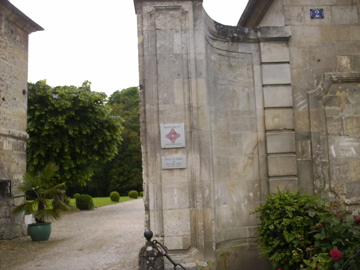
We parked and walked across the roadway to the gates of the chateau. There was no one about and everything appeared to be shut and closed. Finn was concerned we might not be able to get in. After years of chasing the myths about the grandparents’ life and traveling across an ocean, I was determined that a gate wasn’t going to be a hindrance.
Pushing against the gate we discovered it wasn’t locked and in we walked. Before us were stone towers with gray tile turrets and pristine grounds with deep velvet green formal gardens. The only sound—the crunch of the gravel as we walked down the drive to stand in the center courtyard facing the steps where the creased and worn family photos had been taken so long ago.
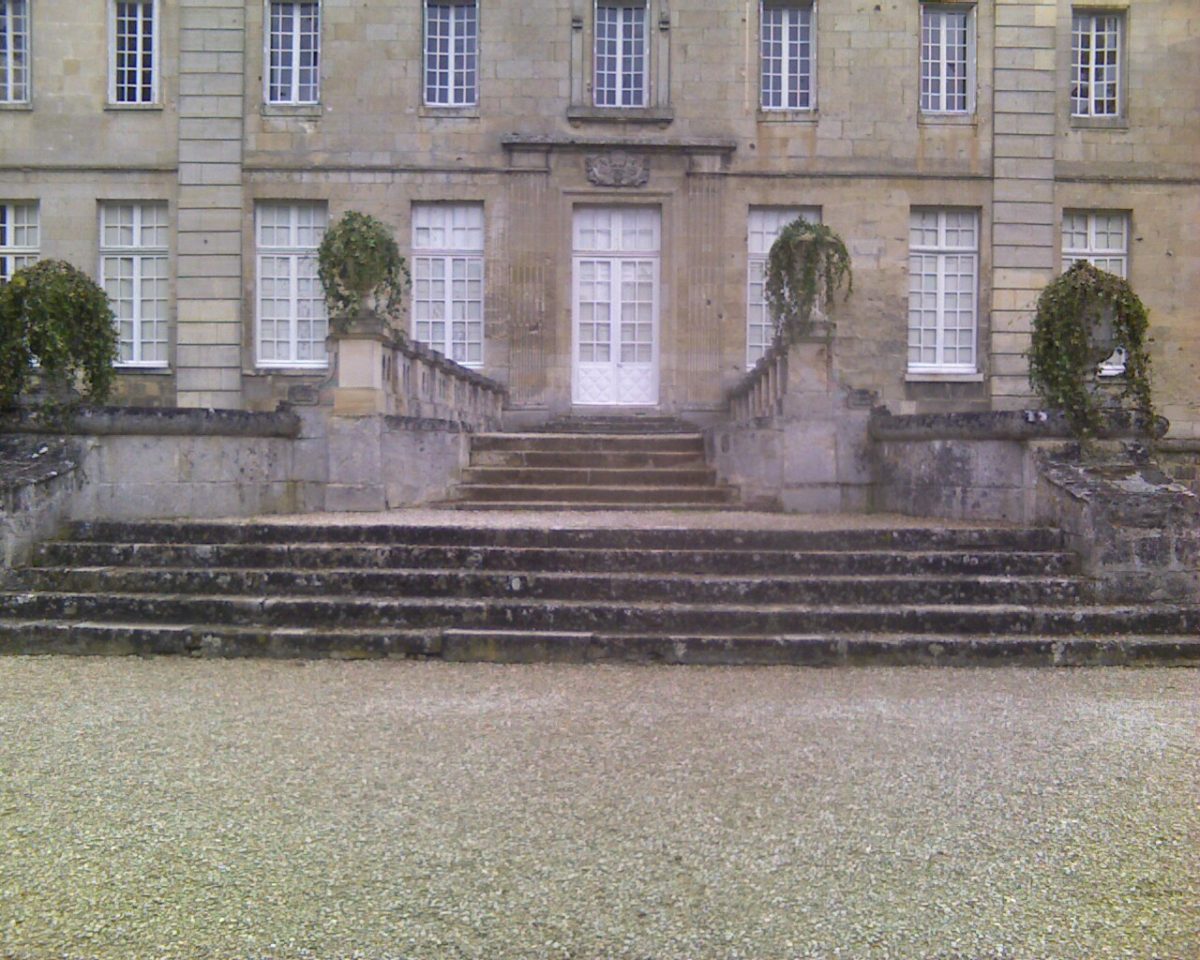
All the years of hearing about the chateau and the vague stories of life there from the childhood memories of our aunts and later family repetition of these tales, seeing the photos of great uncle Oscar, and moster Clary and Nick (Major Malcolm Wheeler-Nicholson) and Elsa and the children–Antoinette and Marianne, our aunts–in fashionable summer attire of the late 1920’s standing on these same steps were tumbling about in my head–it was all true.
They were here and now I was in the very same spot. Considering some of the scurrilous things that have been written about “the Major” and the attempt to discredit him and discount every aspect of his life as something he made up–being in that setting right out of one of his swashbuckling tales gave me that sense of place that Granddaddy Pickens provided on those long-ago southern nights.
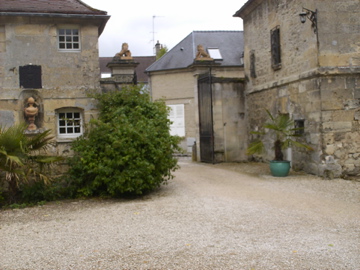
We stood in the courtyard with the old part of the castle to our right, the “newer” part to our left and other outbuildings farther to the left including an old carriage house. Finn left me to my time travel and walked over to a woman in the distance who appeared to be giving instructions to a gardener. I saw them speaking and gesticulating and pointing to me.
Finn called me over and somehow with my fractured French, Finn’s fluent language skills and Madame Peiffer’s English ability we were able to communicate what we were doing here and why.
The Peiffers bought the chateau some years ago to save it from developers and though they do not live there they rent it out for large events and weddings. They have taken great care and everything, the chateau, the grounds, the outbuildings–all are in beautiful condition.
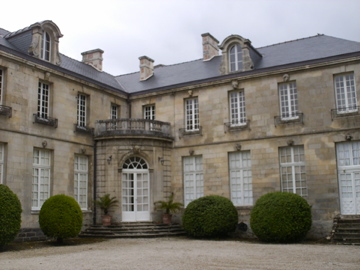
Madame Peiffer is proud of the history of the chateau and when she discovered that at one time we had relatives living there she became excited and insisted on taking us all through the house and grounds. If we had not driven around Paris twice and been late in arriving, we would have missed meeting her.
Madame Peiffer took us through the house and related some of the history. There are references to the chateau dating from the 8th century as an abbey and parts of the current buildings are from the 12th century. To understand that in terms of US history—the only people living on our continent at that point were Native Americans. The chateau has all the ingredients that a proper French chateau should have, beginning as an abbey, crusading knights and Napoleonic connections. If you can read French their website has more details.
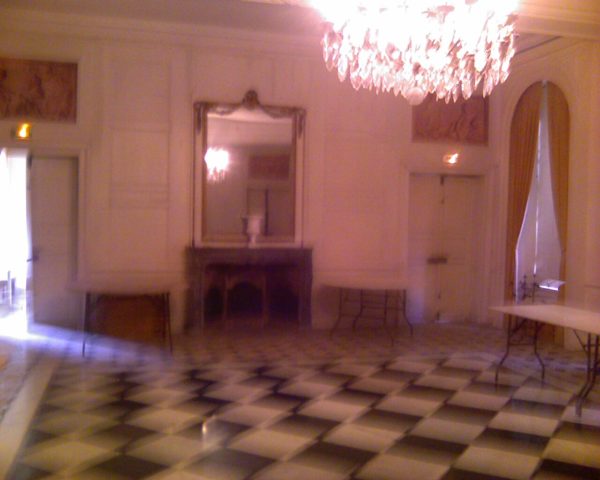
There was little furniture inside, just the bare bones of the house which left the imagination free to roam. I could see the grandparents and aunts, my father and uncle as small children running through the rooms and playing outside in the garden. I pictured the parties and all the activity, the comings and goings of friends and various relatives. There was certainly plenty of room! According to aunt Toni Harley there were 14 servants who ran the chateau when the family lived there. They would have all been needed to keep the place, both inside and out, in running order.
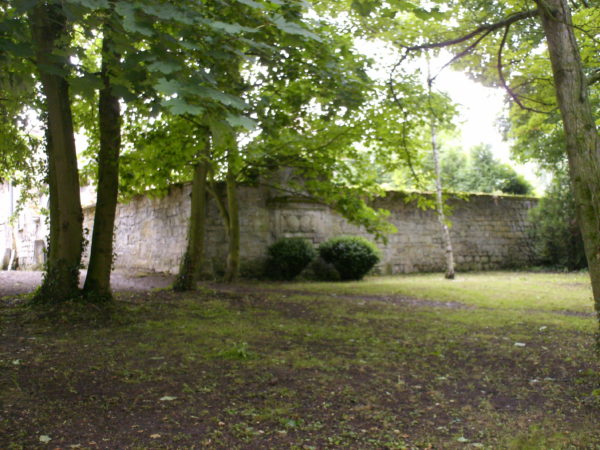
After we went through the main building we walked on the grounds. There are old photos of our grandmother Elsa standing in the gardens of the chateau in her white tennis dress. I asked Madame Peiffer if the tennis courts were still there and she replied yes. As we walked towards the courts, Madame Peiffer pointed out a garden wall dedicated to one of the sons of the family who died while on the crusades. The crusades occurred during the years almost a thousand years ago. (1025-1290)
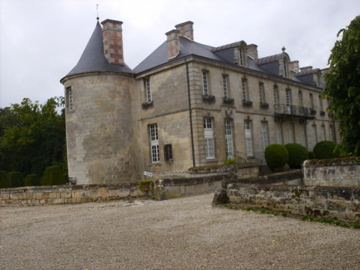
We then went into the oldest part of the chateau climbing up narrow steep stone steps into the old castle keep. We came in just as a group of French school children were preparing to settle in for a talk about the history of the chateau and the ancient history of their own land. And so it goes, stories passing from one generation to the next, weaving in the rope that connects us.
In that short visit I caught so many glimpses of small details that are part of our grandfather’s stories. He loved history and it is not surprising that with his creative imagination and the beautifully haunted setting of the chateau that he was inspired to write stories based in the rich soil of old Europe. One of my favorite stories, The Road Without Turning is a spy story that takes place in WWI and the setting? Why, Vic-sur-Aisnes and its ancient chateau. Naturellement.
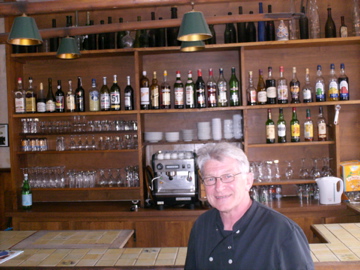
We said our goodbyes to the chateau with many thanks to Madame Peiffer and promises to stay in touch. I was walking on air and ready to move right back in to those proverbial castles. The only thing to do in France after such a perfect encounter is find a bistro and have a glass of wine. Finn remembered that there had been a bistro just down the village street that was a favorite get away spot for the Major.
We decided to follow his footsteps and voila, we found a bistro. Though they were closed, after hearing our tale, the host graciously insisted on providing us with a late lunch. He told us that the Lion D’or was indeed the same bistro and his father would have served the Major. As he regaled us with tales of the bistro’s past, we all raised a glass.
Skal Grandfather Nick.

There are only 3 non-comics features besides the entreaty to join the Junior Federal Men Club features. I.W. Magovern’s regular “Movies” two pages about the latest movies with a photograph of the Ritz Brothers in “Life Begins in College” and Joe E. Brown in RKO’s “Fit for a King.” It’s full of tidbits about movies and stars like Joel McCrea, Ginger Rogers and Katherine Hepburn and written with a snarky attitude as if Ms. Or Mr. Magovern had themselves a nice martini lunch. Enjoy!
There is a one-page feature on the explorer David Livingstone with two black and white drawings oddly entitled “Are You Handicapped” by Richard Speed. And a one-page for the International Good Neighbor Club by Ann Leslie encouraging readers to correspond with members from around the world. The beginning paragraph puts us in that time and place—“In these troubled days, with war clouds hovering menacingly over Europe and Asia, the work we have begun in our International Good Neighbor Club, seems more important than ever.” It’s a moment of sober thoughts in the midst of the comics.
In spite of what appears to be money problems this magazine is another solid publication with good stories and artwork from a regular group of contributors. It was most likely put together in late summer 1937.
Thanks to Doc DC, Comic Book Plus and Grand Comics Database.

